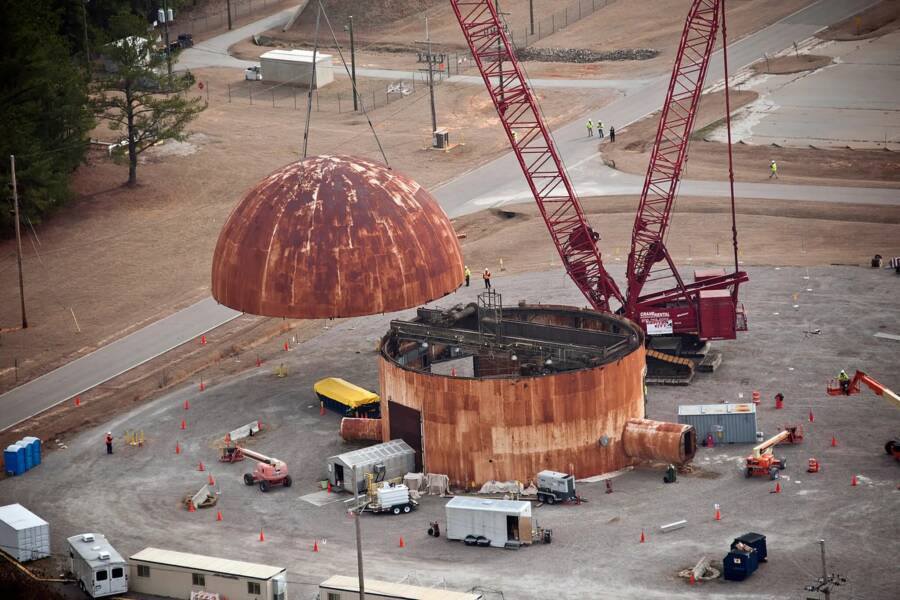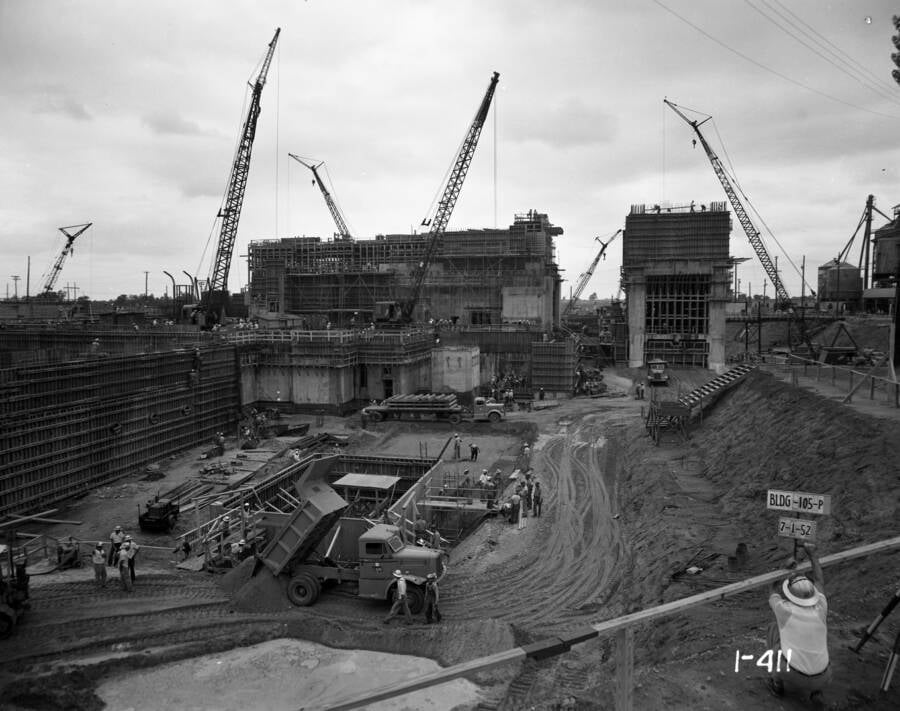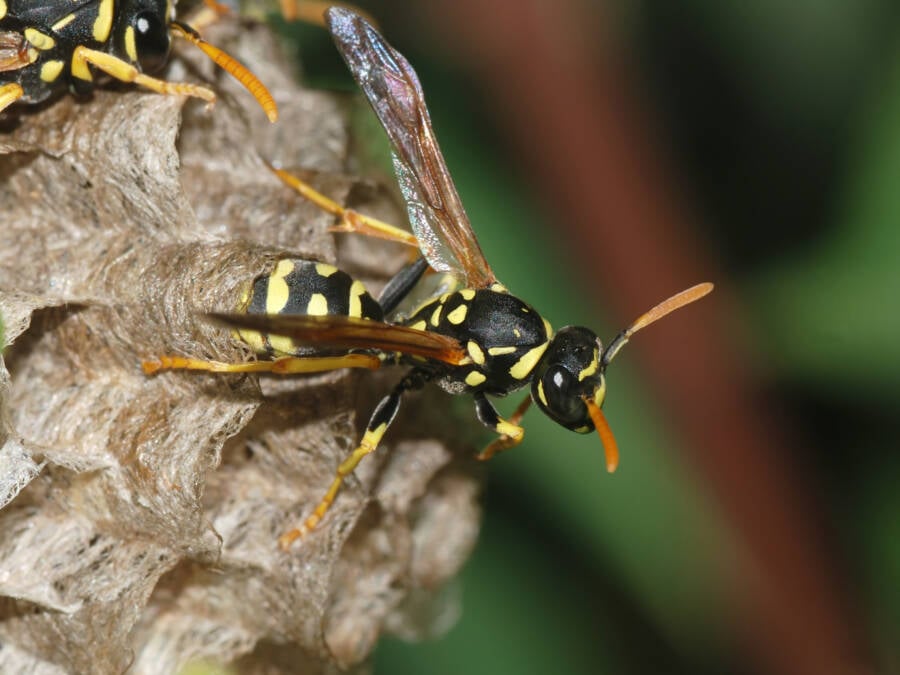The wasps pose no threat to the general public, but there is much experts still don’t know about how the nests became radioactive.

Department of EnergyThe wasp nests were found at a site that produced materials for nuclear weapons during the Cold War.
Four radioactive wasp nests were recently found at a site in South Carolina where the U.S. government used to manufacture materials for nuclear weapons.
The first nest was discovered in early July, and it contained 10 times more radiation than is allowed by federal regulations. Officials say that none of the radioactive nests pose a risk to the general public, but other experts claim that the discovery is a red flag for undetected nuclear contamination in the surrounding environment.
Radioactive Wasp Nests At A South Carolina Nuclear Site
On July 3, a radioactive wasp nest was discovered during routine monitoring of Savannah River Site near Aiken, South Carolina. According to a report from the Department of Energy, the nest contained 10 times the radiation allowed by federal regulations.
The nest was sprayed, removed, and disposed of as radiological waste. According to the report, “The ground and surrounded area did not have any contamination.”
The nest was found on a post near Tank 17 in the F-Area Tank Farm location of the site, which used to produce materials for nuclear weapons. Originally opened in the 1950s, Savannah River Site (then called the Savannah River Plant) spent decades making plutonium and tritium, a component of hydrogen bombs.

Public DomainThe construction of nuclear reactors at Savannah River Site in the 1950s.
The plant stopped production after the fall of the Soviet Union, and the Department of Energy began cleaning up the site in 1996. However, this won’t be complete until 2065.
What’s more, the site may soon see the production of nuclear materials once again. In 2018, the Trump administration released plans to make nuclear weapon cores known as plutonium “pits” at the facility, with the project set to begin in the 2030s.
In the weeks since the discovery of the first radioactive wasp nest, three more have been discovered. Timothy Mousseau, a biologist at the University of South Carolina, told The New York Times, “This is an indicator that there are contaminants spread across this area that have not been completely encased and protected.”
Concerns About Contamination At Savannah River Site
The Department of Energy report on the initial wasp nest discovery stated that the contamination of the nest did not occur because of a leak in the waste tanks but instead from “on-site legacy radioactive contamination.” However, the document did not specify the species of wasp or which radioactive isotopes were found.
Without these details, it’s difficult to figure out exactly how the contamination occurred, environmental watchdog Savannah River Site Watch told the Associated Press. Different species of wasps make their nests out of different materials, so knowing how the nest was built could provide clues as to how it became radioactive.

Alvesgaspar/Wikimedia CommonsReports did not specify which species of wasp was found at Savannah River Site.
Some wasps create their nests with wood they’ve chewed into pulp. It’s possible the wasps discovered at Savannah River Site made their nests from contaminated rotting wood that was somehow missed during an inspection.
Wasps don’t travel far from their nests, so there is little risk posed to the general public by any wasps that may remain. However, Mousseau believes this discovery may have revealed other potential risks.
“The main concern relates to whether or not there are large areas of significant contamination that have escaped surveillance in the past,” Mousseau explained. “Alternatively, this could indicate that there is some new or old radioactive contamination that is coming to the surface that was unexpected.”
After reading about these radioactive wasp nests found in South Carolina, discover the story of David Hahn, the boy who built a nuclear reactor in his backyard. Then, learn about Chernobyl’s lethal mass of radiation known as the Elephant’s Foot.





